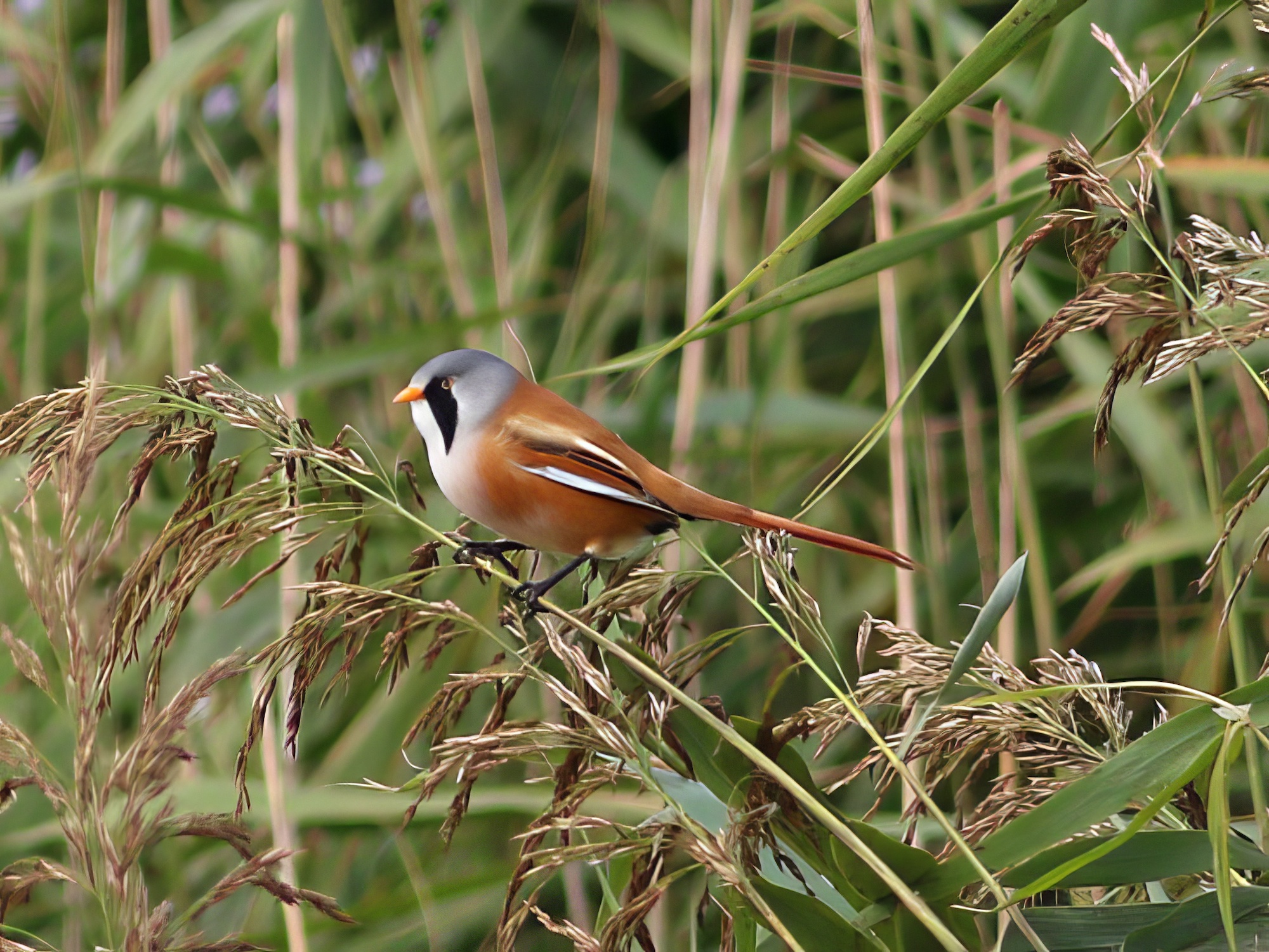Bearded Tit Panurus biarmicus
Scarce and localised, but increasing, resident, passage migrant and winter visitor.

Bearded Tits formerly bred in the fens but had gone by around 1840. Recolonised from around 1968. Lorand and Atkin (1989) reported that around 30 pairs a year bred in the 1980s while the Atlas indicated that breeding was confined to reedbeds at the Humber Clay Pits and the Sea Bank pits from Huttoft south. In the early 1990s bad winters reduced the population to around three pairs. The population stayed low until 2012, with none at all 2002, 2003, 2007 and 2008. Things began to pick up as the Alkborough Flats EA-managed retreat reedbeds developed, breeding was suspected there in 2012 with eight juveniles recorded in July and then in 2013 10 pairs were thought to have bred. The population has continued to increase and RBBP records show that an average of 34 pairs per year bred during the period 2013-2017. The average masks a steady increase to 65 pairs in 2018. Most records are from the coast and inland records, which tend to be in winter, are very scarce.
Finder’s report: Bearded Tits at Anderby clay pits (TF541773), December 6th, 1959.
by L. G. Taylor
Note: this account is from a letter by L. G. Taylor sent to R. K. Cornwallis or A. D. Townsend at the LNU, and then considered by the Rarity Records Committee (as BBRC was known at that time). The record appears in the LNU transactions XV, No. 1, December 1960 and in the Report on rare birds in Great Britain and Ireland for 1959; the species was a RRC (BBRC) submission species until 1963. This was only the second record during the 20th century. There was an irruption of Bearded Tits in Norfolk during that autumn.
Circumstances
While cycling along the road towards Anderby, two small birds were flushed from a reedbed situated slightly to the couth of a cart road which crosses the excavated pits on one’s right hand side. These birds alighted in another reedbed several yards further south clinging to the stems of reeds as they swung in the strong SE wind. My friend and I studies these two birds through binoculars, and we found that one bird was definitely a male Bearded Tit. Grey head and moustachial stripes, light buffish-brown upperparts, and long tail of the same colour. The other bird which accompanied it was slightly lighter in colour, the upperparts being even lighter than that of the male. We could only assume that this was a female Bearded Tit. The two birds again rose and flew with a slow, fairly laborious flight into the wind, their tails spreading during the periods when they terminated their downward swoop.
Addendum: the species continued to be rare in the county and the following year, 1960, there were just three records: two birds, one a male, March 7th, Walesby; male, April 15th, Gibraltar Point; female, November 12th, Crowland Wash.
References
Bibby, C. (1966). Studies of west Palaearctic birds 186. Bearded Tit. British Birds 76 (12): 549-563.
Pyman, G. A. and the Rarity Records Committee (1960). Report on rare birds in Great Britain and Ireland in 1959 (with 1958 additions). British Birds 53 (10): 409-431.
(Account as per new Birds of Lincolnshire (2021), included October 2022)
